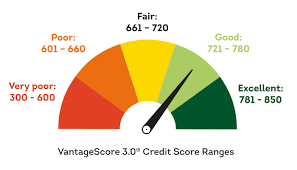Understanding the Basics: What Are Taxes and Why Do We Pay Them
Understanding the Basics: What Are Taxes and Why Do We Pay Them Taxes — the mere word might conjure varied sentiments, from a resigned nod in agreement with the civic duty they represent, to a furrowed brow as we attempt to decipher the mind-boggling complexities during tax season. No matter the response, taxes are an incontrovertible part of our lives, and understanding them is essential for financial literacy. This comprehensive guide aims to demystify the realm of taxes, unraveling the what, why, and how behind society’s most significant revenue stream. The Genesis of Taxation Before we plunge into the nitty-gritty of tax brackets and forms, it is paramount to comprehend the foundational principles of taxation. Simply put, taxes are compulsory financial charges imposed by the government on individuals, entities, goods, or services to fund various public expenditures. One might wonder why we, as citizens, are inherently bound to this fiscal obligation, often cast in an ominous light. The Civil Compact The social contract theory, popularized by Enlightenment philosophers like Rousseau, asserts that individuals consent to be governed by the state in exchange for protection and the provision of public goods. In this compact, taxes emerge as a way for citizens to contribute a fair share towards common utilities, such as national defense, health services, and education. Types of Taxes Defined Taxes meander through numerous categories, each serving distinctive purposes and impacting different corners of our lives: Income Tax: A percentage of individuals’ earnings taxed by the government. Sales Tax: Levied on the purchase of goods and services. Property Tax: Imposed on the value of real estate and other belongings. Corporate Tax: On the profits of business entities. Excise Tax: On specific goods, like fuel, alcohol, and cigarettes. By clarifying these classifications, we gain insight into the multifaceted tax ecosystem and the various ways in which we, the taxpayers, contribute to the socio-economic fabric. The Role of Taxes in Society Understanding the rationale behind taxation steers us towards an appreciation of the roles these payments assume. Taxation is more than mere revenue generation; it’s a tool of fiscal policy with several socio-economic objectives. Funding the Common Good The funds amassed through taxes are the bedrock of public finance, enabling the government to develop and maintain essential services. From national defense to infrastructure, taxes are instrumental in sustaining the core functions of society. Redistribution of Wealth Progressive tax systems, which impose higher rates on the affluent, aim to mitigate wealth disparities. Allocations like welfare, when funded through taxes, can serve as an economic equalizer, aiding the less privileged and fostering a more inclusive society. Regulation and Incentivization Through targeted tax breaks and levies, governments shape behavior, incentivizing activities deemed beneficial (e.g., tax incentives on green energy) and dissuading harmful practices (e.g., taxes on sugary beverages). The Tax Collection Process Unveiled Taxes don’t magically materialize in government coffers; a meticulous collection process underpins their acquisition. This section dissects the route taxes take from paychecks to public expenditure. Tax Authorities and Methods The Internal Revenue Service (IRS) in the United States is the gatekeeper of federal taxation, wielding authority over tax laws’ application and enforcement. Taxes can be withheld at the source, collected on transactions, or self-reported and paid by the individual or entity. The Imperative of Tax Compliance Compliance is key — not merely due to the ethical imperative of honoring our civic obligations, but also to avoid the myriad repercussions of tax evasion, which span from monetary fines to potential incarceration. Strategic Tax Planning for the Future The onus of taxation, however, need not be a burdensome weight. Strategic tax planning empowers individuals and businesses to optimize their finances within the framework of the law. Maximizing Deductions and Credits Savvy taxpayers exploit every opportunity to reduce their taxable income — be it through mortgage interest deductions, charitable contributions, or education tax credits. Professional Guidance and Technology Navigating tax intricacies often warrants external expertise. Tax professionals are an invaluable resource, while tax management software has emerged as a user-friendly aide for the digitally inclined. Adapting to a Tax Landscape in Flux Taxation is not a static domain; it is influenced by evolving legislation, economic shifts, and technological advancements. This section peeks into the crystal ball of tax futurology. The Interplay of Tax Law and Economics Globalization and economic trends continually mold tax policies, with changes in rates, deductions, and the treatment of specific economic activities rippling through the financial world. Technology’s Transformative Touch Advancements like blockchain and artificial intelligence are poised to redefine tax administration, offering unprecedented efficiency and transparency, even as they grapple with new challenges such as the taxation of digital assets. Conclusion The discourse on taxes is vast and profound, its threads interwoven with the very fabric of our social order and personal finances. No matter how we might initially recoil at the thought of taxes, unraveling their enigma illuminates the path to responsible and informed citizenship. This very understanding arms us against fiscal ambivalence, ensuring our contributions serve not just as a matter of course, but as an informed investment in a society reflective of our collective aspirations. For taxpayers and financial enthusiasts alike, this engagement with the complex, yet imperative world of taxation is a step towards robust financial literacy and preparedness. In an age where the harbingers of tax changes can catalyze seismic shifts in the economy and personal wealth, the more we know, the better equipped we are to navigate the aeonian cycles of taxes. Swift and decisive action beckons — to learn, to plan, to adapt — and in doing so, we not only secure our financial future but also fortify the pillars upon which the edifice of modern society stands. Before you go, ponder this — taxes, once perceived as an impenetrable labyrinth, now present an opportunity for educated engagement. The call to action is twofold. Firstly, imbibe the knowledge imparted here; secondly, join the discourse, share your take on taxes, and partake in shaping the economic narratives of our time. Your financial






